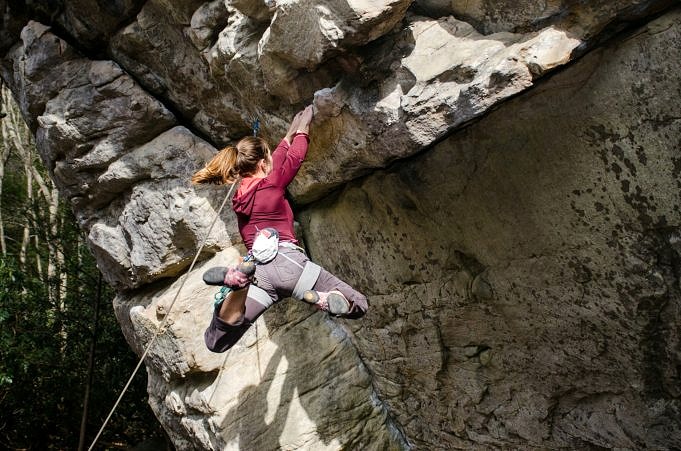Ned Overend won a mountain biking world championship, six cross-country mountain bike national championships and countless titles during his second career in racing off-road X-Terra Triathlons. Ned is an authority on mountain biking. His book Mountain Bike Like A Champion (a must-read for all riders) has a lot to say about this subject. We asked Ned to give us his thoughts on climbing, the most important skill in mountain biking.
Get rid of all the clichés and jargon about climbing. There are many big men who can climb well, and there are many older guys who can climb great. With the right mindset, you can have as much fun climbing and as much fun descending.
Accept the pain. As children, we all learned that pain is not good. It hurts when you stick your hand into the flame. This is causing damage to your skin. Pain has a negative connotation in this respect. It is important to realize that climbing pain can be a positive type of pain. It must be distinguished from other types of pain.
You will feel a little bit numb and your muscles will ache. But, it is important to remember that you are improving your climbing skills and your fitness. It is not a sign that your body is weakening, but it is causing it pain.
Many riders push too hard up a hill and lose a lot of ground at the top. Spin around the hill. Once you have found a rhythm, you can push harder to keep it going.
I don’t want to be dropped if the group rides are pushing hard at the top of a climb. I’ll keep my bike in a low speed and relax my muscles. My focus will be on my breathing and spin. I aim to use less energy than other riders. This helps me to recover a little bit halfway up the climb. Then, at the top, I attack those guys.
Because climbing is slower, aerodynamics are less important. You can also sit higher. On a climb, you want to be able fill your lungs quickly. Do not fold your shoulders. Your hands should be at the ends of the bars. Do not do anything that could restrict your lungs.
Picking a point at the top of your climb can save you a lot of time. Then, get out of the saddle to attack the top. The downhill will be easy.
I don’t use a heart monitor. My respiration and the amount of lactic acid in my legs are what I use to gauge my health. That feeling is what I use to gauge how much energy I have remaining and to adjust my pace.
The weakest link in a bicycle is the front derailleur. You should surge slightly if you are forced to shift to a smaller chainring on a hill. You will find the derailleur doesn’t shift, or worse, chain suck. It is better to plan ahead and determine when you will need granny gear.
Do not climb for long periods of time without resting. You can spin on rolling hills or flat terrain. You like to mix it all. It is good for recovery, and also helps with mental health.



